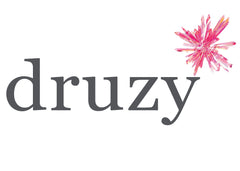Amber - Carry positive energy with you everywhere!
Amber, a fossilized resin that is millions of years old, is prized for both its warm beauty and its healing properties. Considered a talisman of protection and purification, amber brings physical relief, being traditionally used to relieve dental pain in children.
Amber is a fossilized resin, made up of prehistoric trees that lived millions of years ago, valued both for its beauty and for its healing and symbolic properties. Although it is often considered a semi-precious stone, amber is actually a natural organic substance known for its warm colors, from light yellow to orange, red, and even brown tones.
Amber was formed from the resin of trees from the Tertiary era, millions of years ago, being preserved in sedimentary layers. The most famous amber deposits are found in the Baltic Sea region and the Dominican Republic. Some pieces of amber may contain valuable inclusions, such as insects or ancient plants, captured in the sticky resin before fossilization.
Amber is often traditionally used in the form of children's necklaces or bracelets, especially during the period of tooth eruption, due to the popular belief that it helps reduce pain and inflammation associated with teething.
Benefits of amber for children's teething:
- Natural analgesic properties: Amber contains succinic acid, a compound that is said to be released in contact with the skin and that can reduce the pain and discomfort associated with tooth eruption.
- Reducing inflammation: Succinic acid is believed to have anti-inflammatory properties, helping to soothe inflamed gums and reduce irritation.
- Emotional balance: By relieving pain and discomfort, amber can help calm your baby, contributing to better sleep and reducing restlessness during teething.
Precautions:
Although the use of amber necklaces is popular in many cultures, it is essential to follow safety precautions. Amber necklaces should not be worn unattended, as there is a risk of strangulation or suffocation, especially in very young children. If used, they should be adjusted correctly and removed during sleep.
Baltic amber is most commonly used for such purposes, being known for its high succinic acid content.




























































